Hummingbirds are members of the Trochilidae family. There are more than three-hundred species, all of which comprise a group recognized as the smallest birds in the world. However, despite their small size and light weight, they are strong and extremely skillful flyers. Therefore, they require plenty of nutrition to supply energy to their flight muscles as well as for other normal functions.
What do hummingbirds eat? Unlike most other common birds, they do not feed on seeds or crops. Instead, their preferred food is nectar. Their diet also consists of some other types of food. Read on to find out what do hummingbirds eat.
Flower Nectar
Nectar is the favorite food of these birds. Those living in meadows and lush forests have access to plenty of flowers which provide them with their meal. The reason why nectar is the most popular part of their diet is its high content of sucrose. This carbohydrate is a great source of energy for their daily activities. It maintains a high metabolic rate, heartbeat, breathing rate and muscle activities. When a hummingbird hovers in air its wings beat very rapidly. Moreover, its average flying speed can exceed fifteen meters/second. The sucrose found in nectar fulfills all the energy requirements for these strenuous activities.
Furthermore, being liquid, nectar also hydrates these birds. They do not need to drink water.
Tree Sap
In areas where flowers are not plentiful or when it is not the blooming season, these birds substitute nectar with tree sap. The latter is also a source of sucrose. Although its sugar content is not as high as found in nectar, it is still a good replacement.
Tree sap is obtained through holes in the trees which make the sap ooze out. These holes are made by other birds including sap suckers and woodpeckers.
Pollen Grains
A hummingbird possesses strong flight muscles which require protein to be built up. A small part of this protein comes from pollen grains. These birds do not feed on pollens directly. Instead, some of these stick to their beaks and tongues when they are obtaining nectar from flowers. This pollen travels down to their digestive system and fulfills a small part of their protein requirement.
However, pollen grains are not their preferred choice of food. As already mentioned, it is ingested accidently while feeding on nectar.
Insects and Bugs
Insects and bugs are another source of food for these birds to provide the nutrients which are not found in nectar. These include proteins, fats and salts which are necessary for different functions and activities of the body. Therefore, a hummingbird may feed on tiny insects, larvae and even eggs of insects. Their most common prey is a spider. Others include ants, mosquitoes, caterpillars, aphids, small beetles, midges and gnats.
Baby hummingbirds are fed a mixture of nectar and insects. As they are in their growing phase, they need all the nutrients required to build muscles, store up energy in the form of fats and support all vital functions of the body.
Sand
Sand is a strange choice for food, but it fulfills some dietary requirements of these birds. It is a source of certain salts and minerals which are neither found in nectar nor in insects. Therefore, often, these birds can be seen feeding on sand.
Homemade Sucrose Solution
Some bird lovers like to attract beautiful hummingbirds to their gardens or backyards. For this purpose, they place bowls filled with sucrose solution on bird perches. This strategy has been proven successful as these tiny birds get attracted to this sugar source which is close to nectar in composition. The solution is prepared with a ratio of one to four between sugar and water. This concentration is approximately the same as that found in natural nectar.
Interesting Feeding Facts
Here are some interesting facts related to the feeding behavior of these birds.
- They need to feed at regular intervals of ten to fifteen minutes in order to have a continuous supply of energy for their activities.
- Obtaining tree sap can be a double treat for them as they may also find small insects in the tree holes.
- They may drink nectar from a thousand flowers in a day.
- A hummingbird can assess when a flower's nectar would be ready again, so that it can visit it again on time.
- Long and slender beaks along with forked tongues are an important adaptation which helps in sucking nectar from thin tubes in flowers.
Latest Birds
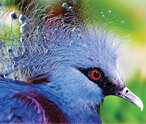
Victoria Crowned Pigeon
With its name...read more
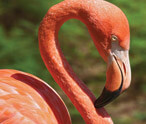
Information About Flamingos
Flamingos are...read more
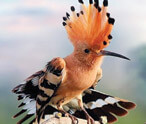
Hoopoe Bird
Famous for its distinctive crown of...read more
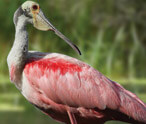
Roseate Spoonbill
The beautiful Roseate Spoonbill...read more
Latest Mammals
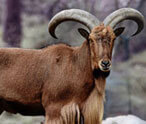
Types Of Goats
Goat is a mammal that belongs... read more
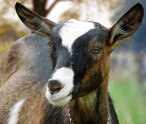
Goat Facts
A domesticated form the wild goat of...read more
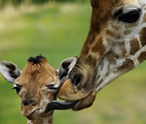
Giraffes Facts
Giraffes are creatures with extremely...read more









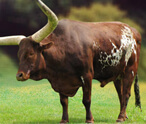

















Largest Birds of Prey in the World by Size and Weight
Also called raptors, the birds...
List of Birds That Fly in V Formation
Did you ever feast your eyes on the amazing phenomenon...
Birds of Prey List
A bird of prey is also known as a raptor or a hunter. It belongs to the group of...
Millipedes Vs Centipedes
Centipedes and millipedes are both arthropods from the group...
Difference Between Warm Blooded and Cold Blooded Animals
Every living organism...
Top 10 Extremely Dangerous Insects
The insects have been grouped in class 'insecta' of...
Sheep Vs Goat
The goat and the sheep are related to each other through the same family. They...
Animals with Blue-colored Blood
Humans and other vertebrates have red-colored blood running...
Birds, Mammals And Reptiles
Before coming to the question of common ancestry of birds...